By Mohamed Albdri Sliman Bashir
Reports continue to emerge of the alleged looting of tens of thousands of artefacts from the Sudan National Museum in Khartoum. The museum, near the confluence of the White and the Blue Niles, holds a history of the region, home to ancient civilisations, temples and pyramids. But it has been caught in the crossfire in a war between the paramilitary Rapid Support Forces and the Sudanese Armed Forces that has left millions displaced and devastated the built environment. Mohamed Albdri Sliman Bashir is an archaeology scholar who knows the museum intimately. We asked him what’s at stake.
When was the museum established and what is its importance?
The Sudan National Museum is a testament to the region’s rich historical and cultural heritage and serves as an important repository for the country’s antiquities. It was founded in 1959, ahead of the construction of the Aswan High Dam. A Unesco-led salvage campaign was launched in 1960 to protect and preserve the ancient monuments that would be flooded by the dam, which would alter the landscape of the Nubian region.
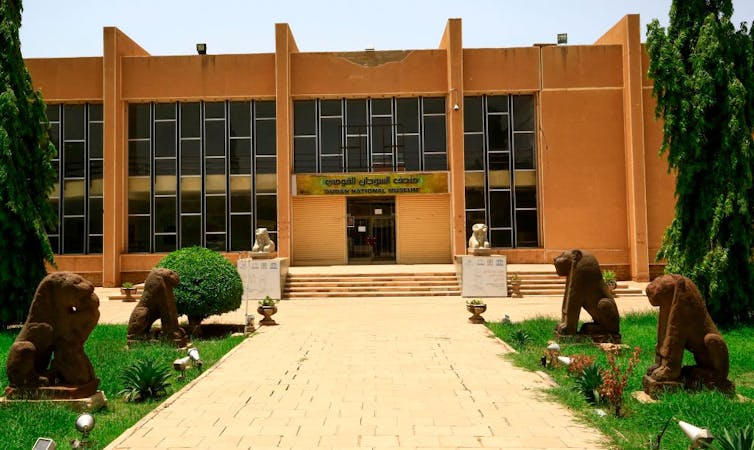
Archaeologists faced a daunting challenge: they had to document and relocate countless artefacts and structures from Egyptian and Sudanese Nubia before they were lost. The scale was immense. Entire temples were painstakingly dismantled and rebuilt in safer locations. While Egypt was home to important temples, Sudan’s archaeological treasures were smaller but just as valuable.
It was decided to bring three temples to Khartoum to be protected and preserved for future generations. Originally the antiquities were housed in an outbuilding of the University of Khartoum, but the conservation work laid the foundations for the construction of a national museum. Its location was carefully chosen, close to the former zoological garden, where the recovered temples could be integrated into a larger history of Sudan.
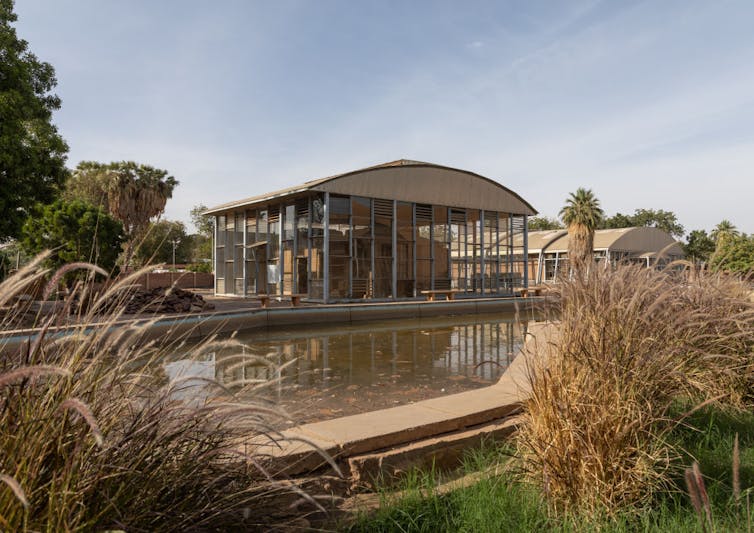
The German architect Friedrich Hinkel conducted extensive research in Sudan and played a key role in the museum’s design, opting for a unique layout that reflects the winding course of the Nile. Each temple was reconstructed along a specially designed basin that simulated the riverbank of Lower Nubia, preserving their original alignment and contextual significance.
The museum was inaugurated in 1971 and represents a milestone in the Sudanese cultural landscape. It not only preserves Nubian artefacts, but is also a centre for research, education and cultural mediation.
What are the most notable collections?
The Sudan National Museum houses artefacts ranging from prehistory to the Islamic period. The museum’s collection of more than 100,000 artefacts is an important source for understanding what shaped this region.
One of the most remarkable collections is that of the Neolithic civilisations dating from 5000BC to 3500BC. Artefacts from this period offer insights into the early agrarian (farming) societies that laid the foundations for later social organisation and cultural expression. Particularly fascinating are the remains of daily life, including pottery and tools, which illustrate the technological progress of these prehistoric communities.
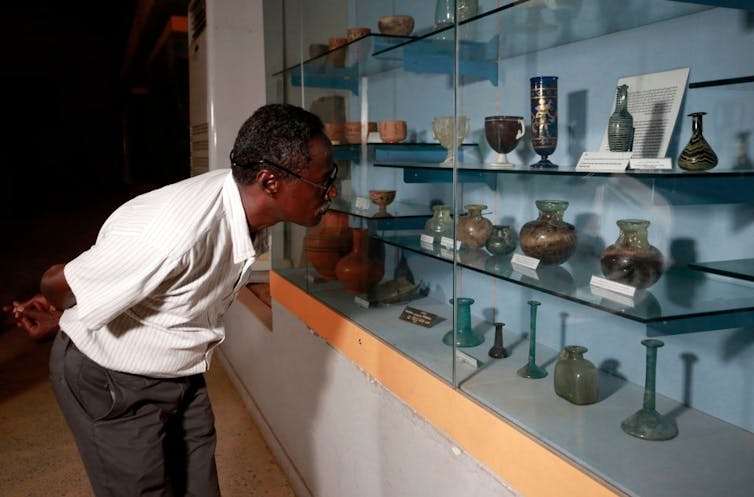
The museum also displays artefacts from the period of Egyptian colonisation in Nubia, which led to a fusion of cultures and artistic styles. Among the most important collections are objects from the Old, Middle and New Kingdoms of Egypt (2660BC to 900BC) that illustrate the intertwining of two great civilisations.
The Pre-Kerma civilisations show the development of culture and power dynamics in the region. Another collection focuses on the Kingdom of Kerma (2500BC to 1500BC), known for its monumental architecture and advanced society.
The Kushite civilisation, especially from 744BC to 300BC, is another. The magnificent collection includes huge statues of Kushite kings and their deities. These emphasise the artistic skills of the period and also reflect the theocratic and political ideas of Kushite society.
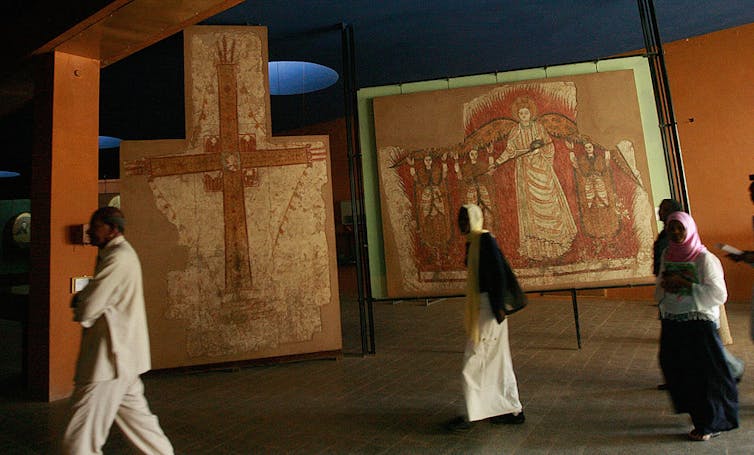
Perhaps one of the most remarkable aspects of the museum is the presentation of the Meroitic civilisation (300BC to AD350) and the post-Meroitic kingdoms. The artefacts from this period, including intricately inscribed funerary stelae (tablets made of rock), jewellery and beautifully decorated pottery, tell stories of the everyday and the sacred. They highlight the rich spiritual life and social customs of the civilisation.
Finally, the museum houses an exquisite collection of Christian frescoes from the Cathedral of Faras. This gives an insight into the mediaeval period when Christianity took root in the region. These vibrant artworks represent Sudanese culture at this time: a fusion of indigenous beliefs and Christian iconography.
Why is the history of Nubian and Kush cultures important?
The history of the Nubian and Kushite cultures is a testimony to the rich contribution of black African communities to human civilisation. They emphasise the resilience, complexity and ingenuity of African societies that are often overshadowed by Eurocentric versions of history.
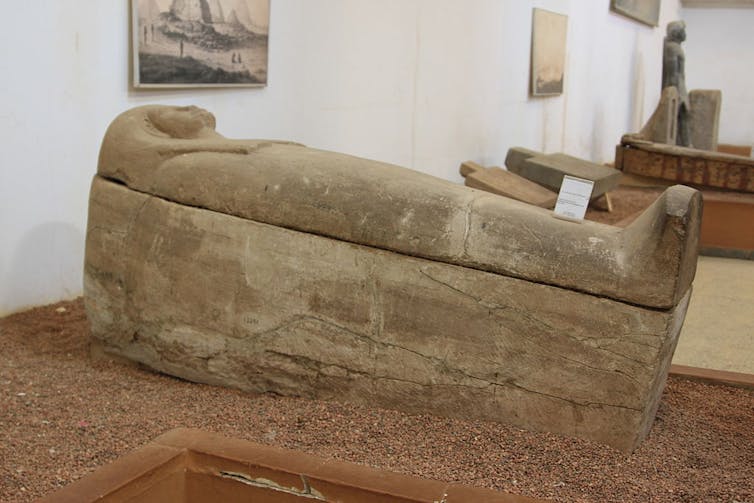
The Kingdom of Kush, which emerged around 1070BC, was a formidable entity which challenged the dominant powers of the time, including Egypt. At its height, the Kushite Empire stretched from the confluence of the Nile rivers to the Mediterranean sea, emphasising its importance in regional politics, trade and culture.
The Kushites were known for their pyramids at Meroë, which reflect a distinct architectural style. At a time when Rome was still emerging and Greece was rooted in city-state politics, the Kushite kingdom ruled over an empire that facilitated trade routes and cultural exchange between sub-Saharan Africa and the Near East. This network played a role in the spread of ideas, goods and technologies. Kush was a central player in the ancient world.
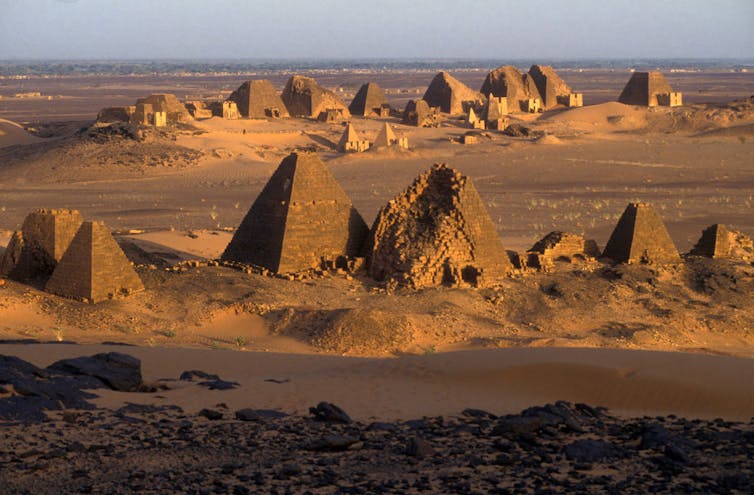
Nubian leaders such as Piye and Taharqa are celebrated as custodians of culture who blended indigenous practices with influences from other lands, including Egyptian traditions. This cultural merging of beliefs enriched the heritage of both societies and fostered a legacy of co-operation and mutual respect. The achievements of the Kushites in warfare, governance and art illustrate the dynamism of African civilisations and their ability to innovate and adapt.
What would the impact be of losing these collections?
The reported loss of parts of this collection represents a profound and multi-layered tragedy for future generations. Cultural collections serve as an anchor for a society’s identity. They embody the shared memory of a community and foster a sense of belonging and continuity with the past. Losing this not only undermines our understanding of who we are, but also hinders the transmission of knowledge and cultural values to our descendants. And their role in the world.
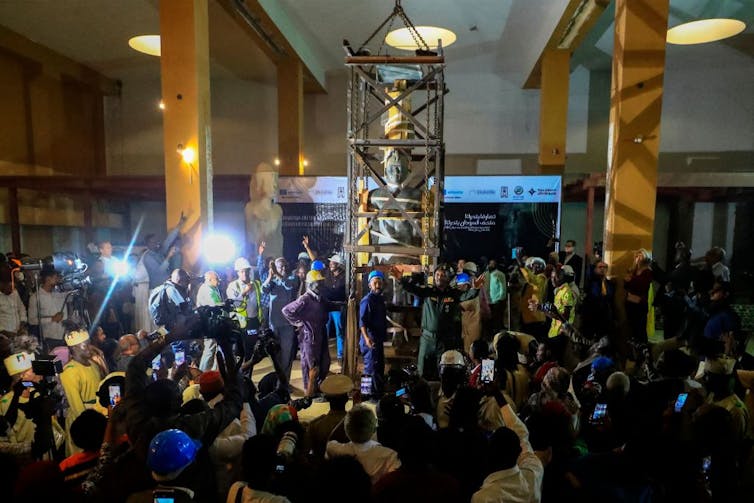
The restored materials in the National Museum serve as touchstones of Sudanese identity and symbolise resilience. Future generations will no longer have access to the reminders of their ancestry that express the complexity of their identity.
Cultural artefacts can play a role in community cohesion and peacebuilding, especially in regions marked by conflict. The antiquities we lost were not just objects, but expressions of shared experiences that united the different communities in Sudan. Future generations risk inheriting a fractured history, instead of a nuanced understanding that takes into account different perspectives.
The loss goes beyond the tangible; it has profound implications for our collective memory and the ethos we pass on.
Originally published in The Conversation




